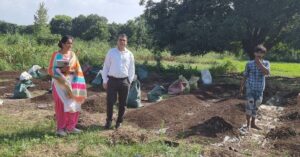Naga Scientist’s Exotic Mushrooms Help Over 500 Farmers Raise Their Incomes
Besides training over 500 farmers in Nagaland, his startup has gone on to generate approximately 20,00,000 Shiitake dowel spawns and 25,000 kg of Oyster mushroom spawns.
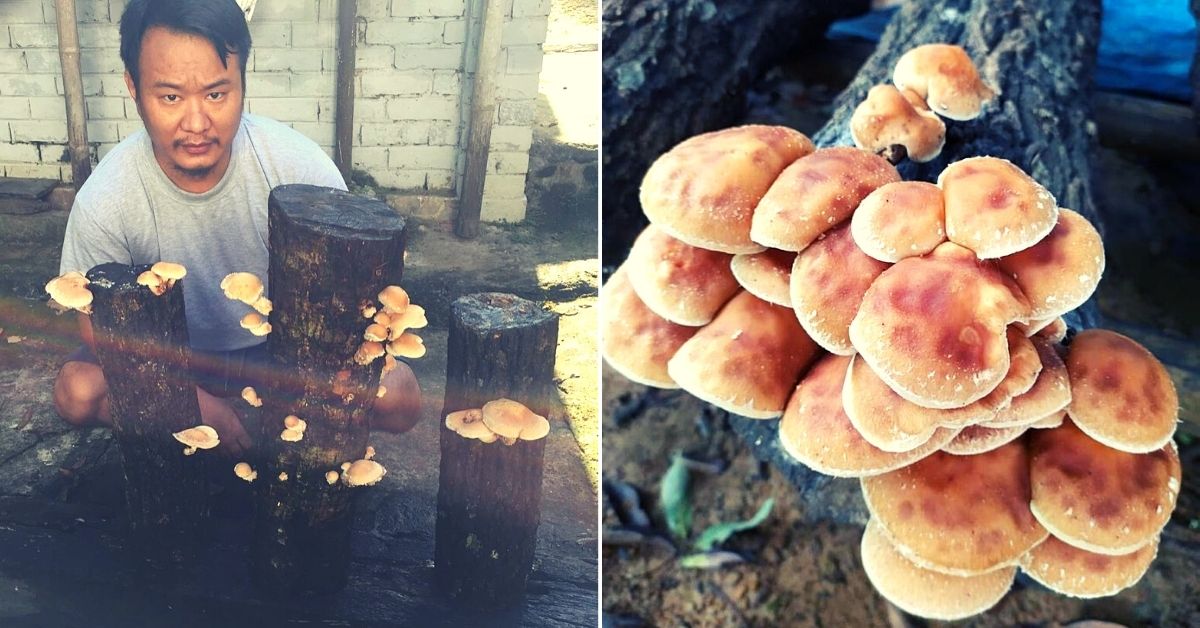
Shiitake mushroom—an edible, profitable and nutritious mushroom mostly grown in East Asia—has found a new home in the northeastern state of Nagaland. The pioneer behind this development is 37-year-old Dr Sosang Longkumer, a microbiologist, who established a small mushroom spawn production laboratory in Dimapur back in early 2018.
Following months of research and experimentation, Dr Longkumer saw the first fruit spawn in October 2019. Delighted with the results, he posted a picture on his Instagram account with a caption stating: “So elated to see the exotic shiitake mushrooms in full bloom in Nagaland. Hoping this brings a new chapter of shiitake mushroom farming in Nagaland.”
Exactly a year since then, Dr Longkumar has trained approximately 500 farmers in Shiitake and Oyster mushroom cultivation through his start-up, Konger Agritech. Moreover, the Dimapur-based startup has gone on to generate approximately 20,00,000 Shiitake dowel spawns, and 25,000 kg of Oyster mushroom spawns as well.
However, his interest in cultivating mushrooms began as a challenge.
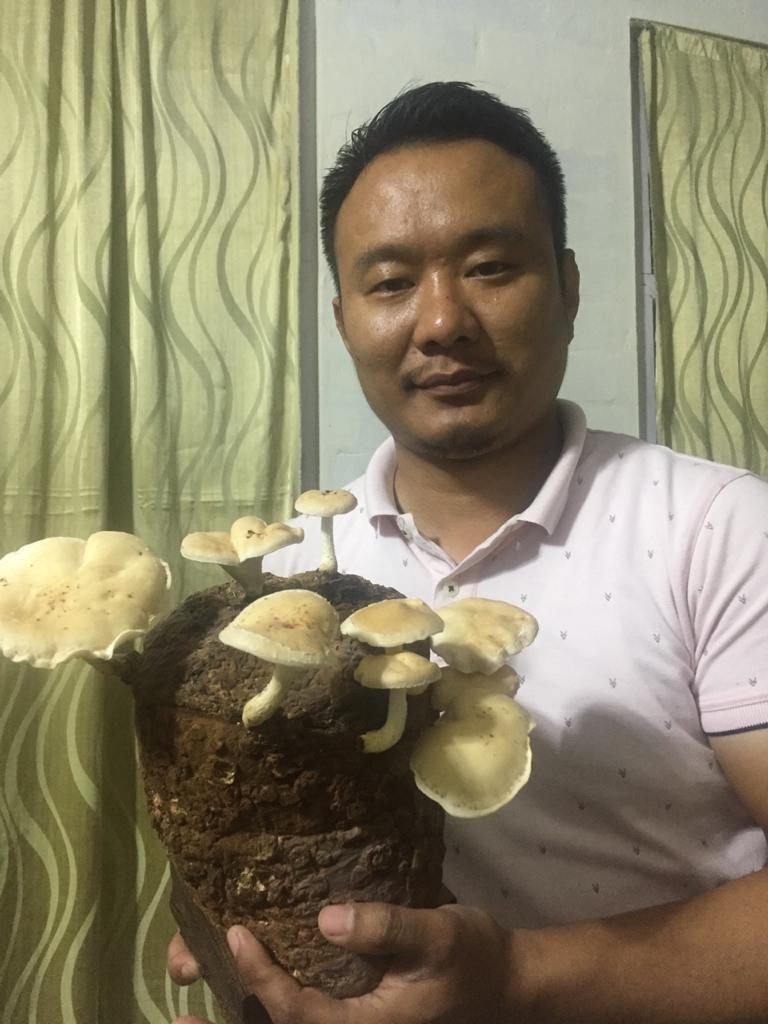
Challenge Accepted
“My interest in mushrooms began when Dr Rajesh, a senior scientist and my former colleague at Indian Council of Agricultural Research (ICAR) unit in Nagaland, challenged me to grow mushroom cultures and make spawns inside the laboratory. This was sometime in 2010, and I was working as a research associate. Backed with my knowledge of microbiology and applied genetics, I completed the challenge. Dr Rajesh was impressed by the quality of my mushroom spawns and advised me to set up a spawn production lab to help farmers grow mushrooms all through the year. Mushroom farming is a profitable venture with low investment and early returns. It can be a full-time or an alternative source of income. Subsequently, I attended an entrepreneurship programme by Council of Scientific and Industrial Research (CSIR) in 2011,” says Dr Longkumer, speaking to The Better India.
Before setting up his own lab, there was a scarcity of mushroom spawns in Nagaland. Even government-backed laboratories produced these spawns only during the winter months and that too in minimal quantities. To make mushroom cultivation a year-round activity, Dr Longkumer knew he needed a spawn production laboratory to ensure perennial availability for every farmer who wanted to cultivate mushrooms. With the growing interest from potential farmers, government agencies and other organizations, he took it upon himself to set up the lab.
Meanwhile, the emphasis on Shiitake mushrooms was also borne out of the fact that it fetches great prices on the market (as high as Rs 500 to 600 per kg) and requires minimal labour input.
“Mushrooms are a great source of nutrition. Unlike other farm activities, growing mushrooms requires less physical stress. It’s something even the elderly can do. So, I thought, why not make it a household practice in the state. In the long run, I also thought Nagaland could become a hub for mushroom farming,” says Dr Longkumer.
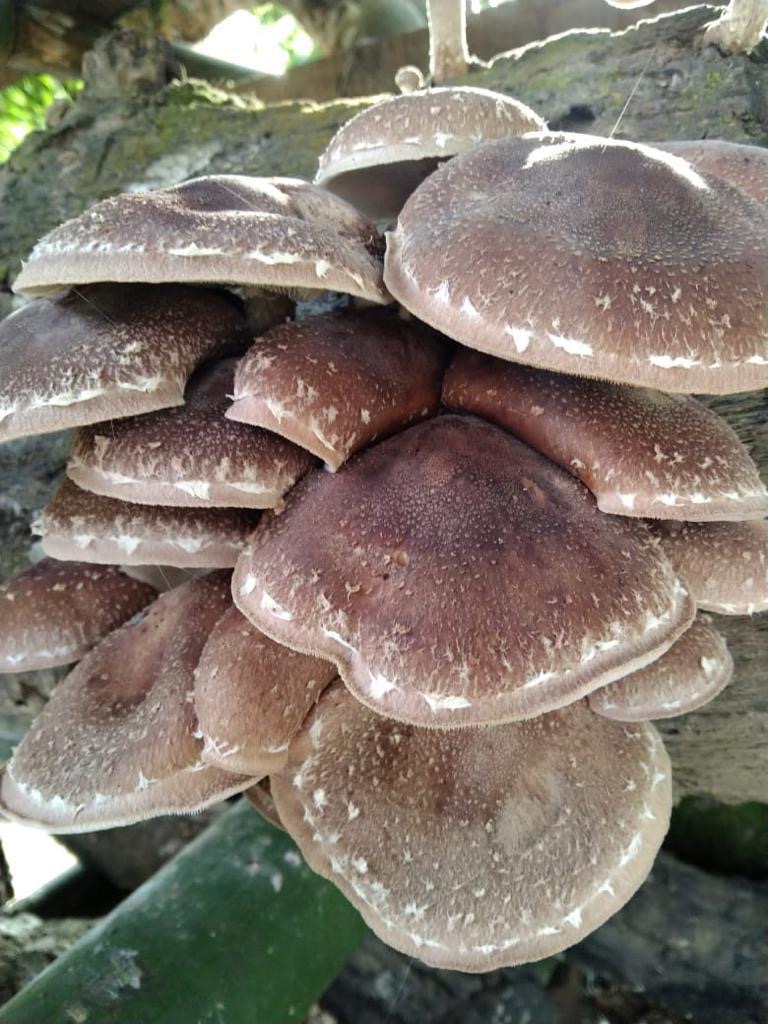
Objectives
Beyond the scientific challenges of spawning mushrooms, the real challenge for Dr Longkumer was how to convince farmers in Dimapur or Mokokchung district to take up Shiitake mushroom farming since locals didn’t know much about it. He initially encouraged farmers to grow small volumes so that even if it failed, the loss would be minimal.
Besides starting a series of training sessions, Dr Longkumer also offered them a buyback policy for their mushrooms, which really got the farmers to buy into it.
“However, my aim from the beginning has been knowledge sharing and empowering the farmers. From the time they procure spawns from us to the time they harvest, we offer them guidance through every step. Each variety and place requires a different approach based on the climatic conditions. I take it as my personal responsibility to continuously research and pass on any information to the farmers. We have a Whatsapp group consisting of farmers to communicate actively, share reviews, feedback and information daily. Hand-Holding them through every stage is my prerogative. Also, since the government neither links the farmers to markets nor does it have a buyback policy, we guarantee purchase,” he says.
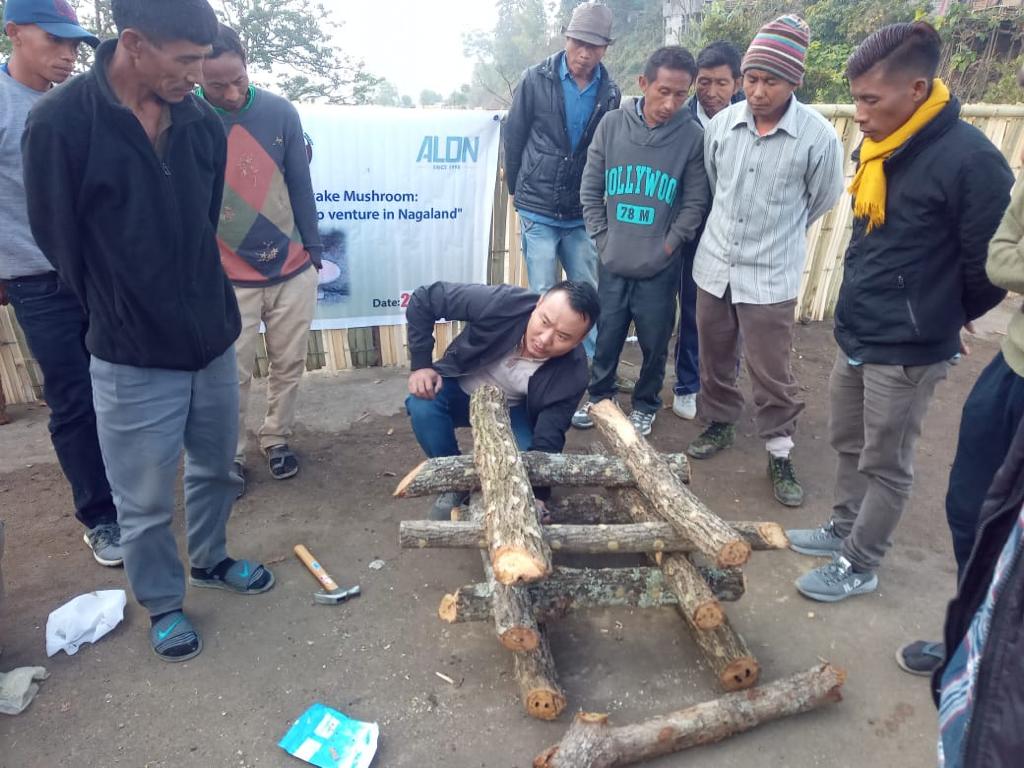
The other objective is to encourage a breed of entrepreneurs who can collectively contribute to building the economy of the state through farming, calling them ‘Mushroom-preneurs’.
Currently, Konger Agrictech has approximately 200 independent Shiitake farmers, 300 independent Oyster mushroom farmers and multiple self-help groups in its network. The startup has become a point agency for the Nagaland government in livelihood generation.
They have tied up with the Department of Forests and Environment, Nagaland under the Japan International Cooperation Agency (JICA) project for mushroom farming. Pilot projects have started with farmers in Noksen village in Tuensang district, Touphema in Kohima District, and Mopungchuket in Mokokchung district. Also, they have tied up with the Nagaland State Rural Livelihood Mission (NSRLM) which is the implementing agency for National Rural Livelihood Mission in the State. For this project, they have activated SHGs in the districts of Mokokchung, Wokha and Kohima. In its ‘Roadmap for Economic Development- Post COVID-19 Pandemic’, the NSRLM cited mushroom cultivation as a key facet of their plan.
Konger Agritech also trained district officials of NSRLM so that they can go back and teach mushroom farming to SHGs in their respective districts. Besides, the startup also regularly conducts free training sessions for individual farmers, students and unemployed youth.
“To be honest, I didn’t take up Shiitake farming for strictly commercial purposes. It was more of a side hustle and an attempt to include more varieties in my family’s diet. Having said that, I had a good harvest. I sold my produce to other family members and relatives, which helped me to earn a substantial amount. I initially invested about Rs 20,000 into Shiitake mushroom farming, but post-harvest earned about Rs 50,000. In the next four years, I’m looking to earn about Rs 4-5 lakh,” says Lhuvevolu A Rakho, the owner of a small boutique in Thuvopisu village, Phek district.
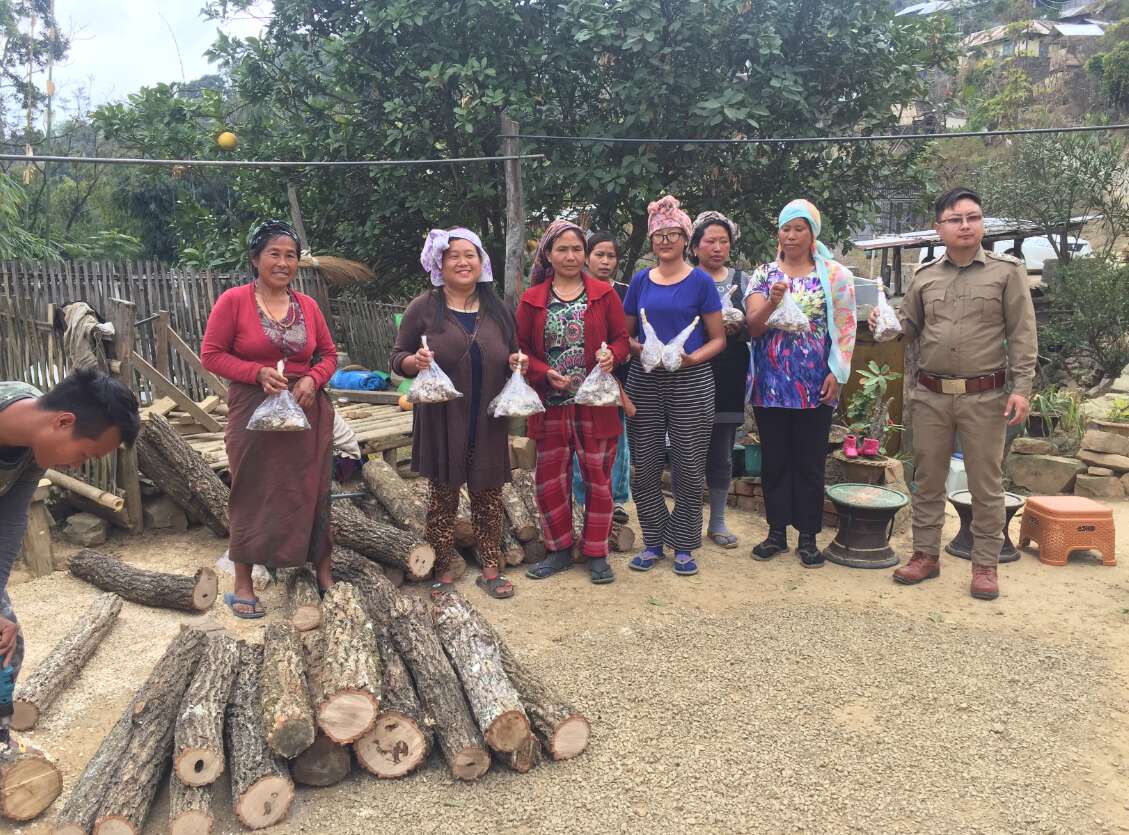
Meanwhile, SHGs like Pangjamer based in Aliba village, Mokokchung district, earned approximately Rs 60,000 in their first season of fruiting and it fruits twice a year. The same logs will bear the same amount of fruit or more in the next four to five years.
The Process of Growing Shiitake Mushrooms
“For the production of Spawn, we tissue culture a part of Shiitake mushrooms tissues under appropriate laboratory conditions. Once the fungus grows well we transfer them to a wood dowel and incubate it at appropriate temperatures for 15-20 days in the fungus culture room. In this time, the fungus colonises the wood dowel, and it finally becomes a wood dowel spawn. This wood dowel spawn is purchased by farmers (Rs 2 per wood dowel excluding transportation costs) and used to inoculate another wooden log measuring 5-8 inches in diameter and 3-foot long logs. The fungus then gets transferred to these wood logs and slowly colonises them. This process takes about 7 months in softwood and 12 months in hardwood, following which they are ready to generate fruit,” says Dr Longkumer.
To cultivate mushrooms in logs, the startup follows the tree pollarding (pruning/cutting the branches in a certain way not to harm the tree) and branch cutting methods to ensure the tree is saved for future use as it regenerates itself and the forest, especially the lower plant ecosystem.
“Logs such as oak, alder and chestnut which are native to Nagaland, are used for cultivation. Our log cultivation method generates mushrooms which taste better and have greater medicinal values as compared to exotic mushrooms grown on synthetic sawdust logs in temperature-controlled rooms. I chose to focus on exotic and speciality mushrooms because these mushrooms can be easily produced in huge quantities with the right sort of guidance. Moreover, these crops can’t be grown in other parts of India because of the lack of natural resources and climatic conditions,” he informs.
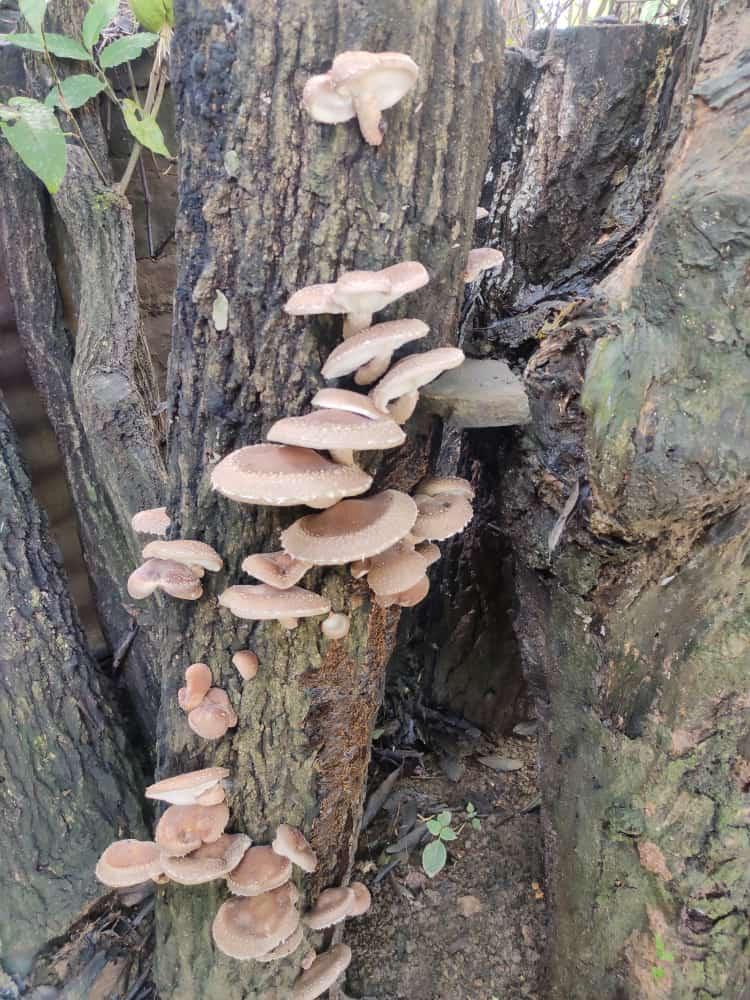
Future plans for Mushrooms
Since the nationwide lockdown was first imposed, hundreds of Nagas have been spawning, harvesting, eating and selling kilograms of the delicacy. For this self-funded venture, however, this is only the beginning, and they are looking to increase the number of ‘mushroom-preneurs’ in the years to come.
“We want to make Nagaland the go-to-market for exotic mushrooms. Nagaland should become a brand for exotic high priced mushrooms and find buyers from all over the world. The best part about this is that anyone can do it, including office-goers. It may start as a side hustle, but one day it could become your full-time business. That’s the beauty of it,” says Dr Longkumer.
(Edited by Vinayak Hegde)
Like this story? Or have something to share? Write to us: [email protected], or connect with us on Facebook and Twitter.
If you found our stories insightful, informative, or even just enjoyable, we invite you to consider making a voluntary payment to support the work we do at The Better India. Your contribution helps us continue producing quality content that educates, inspires, and drives positive change.
Choose one of the payment options below for your contribution-
By paying for the stories you value, you directly contribute to sustaining our efforts focused on making a difference in the world. Together, let's ensure that impactful stories continue to be told and shared, enriching lives and communities alike.
Thank you for your support. Here are some frequently asked questions you might find helpful to know why you are contributing?


This story made me
-
97
-
121
-
89
-
167




